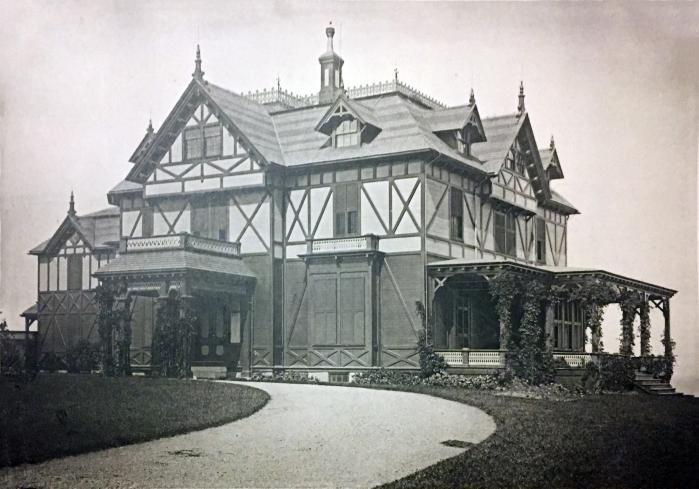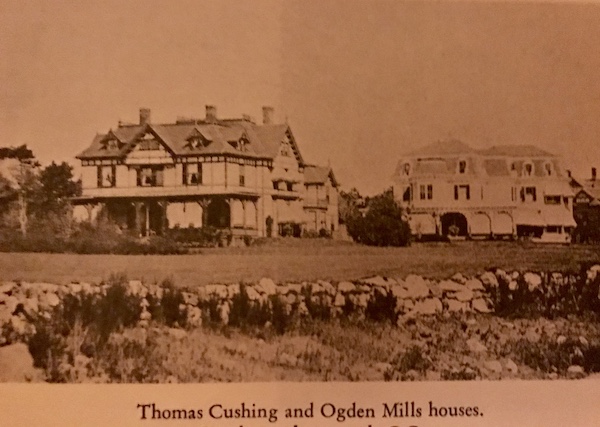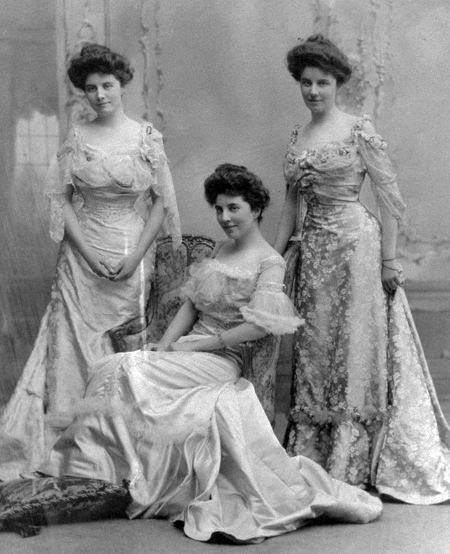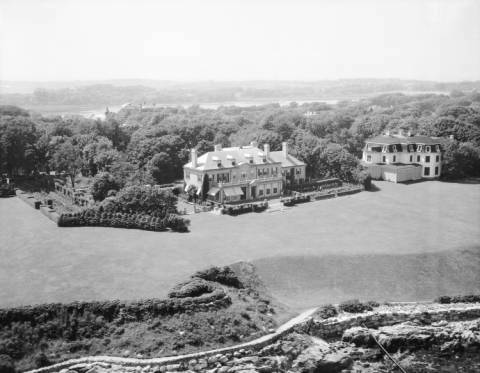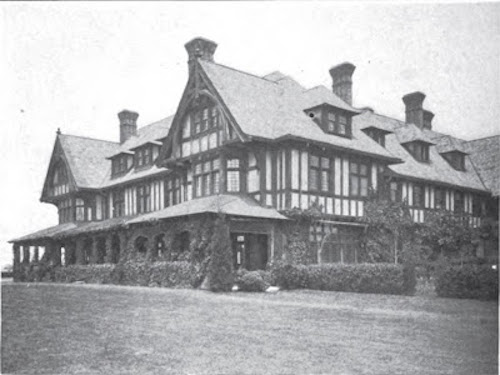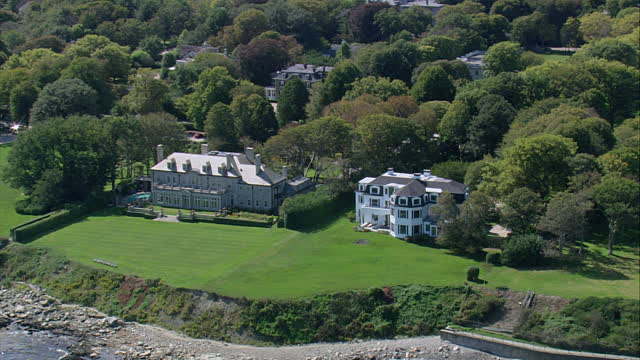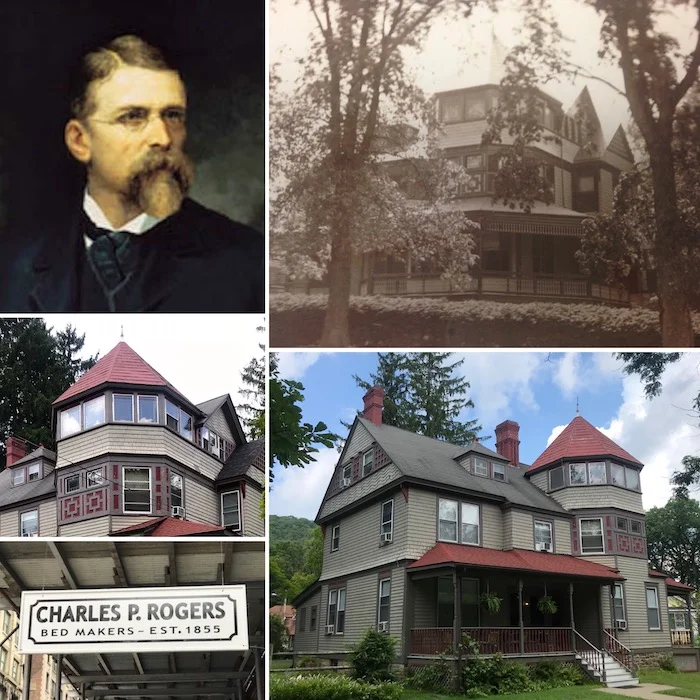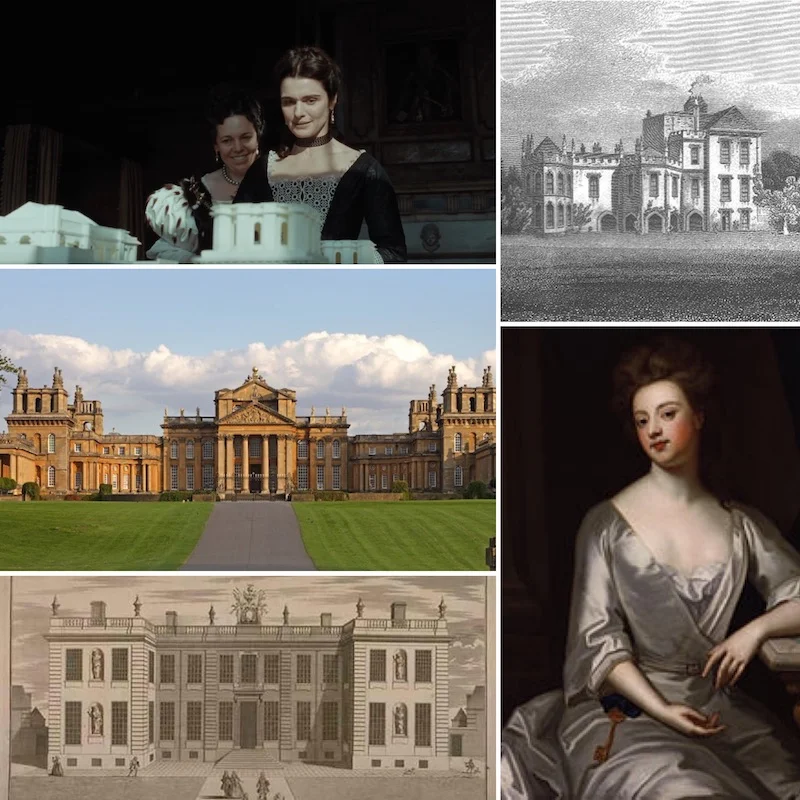From New Lodge to Rock Cliff - The story of a Newport cottage and some of its owners
Many are familiar with the tales of Newport’s most famous gilded age cottages and the bold-faced names who lived in them; the Breakers and the Vanderbilts, Clarendon Court and the von Bulows, and so on. Part of what makes Newport so interesting for me is also discovering the stories associated with some of the lesser known ones. Each has their own interesting tale to tell. Woven together they help create the glorious tapestry of the resorts mythic history. This is the story of one of them.
In 1869 Thomas Forbes Cushing commissioned prominent Newport architect George Champlin Mason to design a Newport cottage for him.
The spacious multi-gabled house, named New Lodge, featured multiple piazzas and a generous porte cochere, similar to many of its contemporaries. Its tudoresque half-timbered detailing however, was a departure from the Italianate and second empire styles dominating the resort at that time. Inside, its layout featuring ocean views from all of the principal entertaining rooms, and its modern décor were greatly admired. Decades later the New York Times described it as “one of the handsomest of the fashionable residences of that resort” in Cushing’s obituary. Overlooking the cliffs on the further reaches of Bellevue Avenue, it sat next to the Ogden Mills’ Ocean View and eventually Frederick Vanderbilt’s Rough Point.
Born into a wealthy Boston family, Cushing had married Fannie Grinnell (daughter of Moses Grinnell, a New York Congressman, Customs Collector for the Port of New York and early Commissioner of Central Park). The couple easily moved between the highest social circles of New York and Boston. A year after building New Lodge, the Cushings had the architectural firm of Snell and Gregerson design a large brick second empire home for them at 163 Marlborough Street in Boston’s Back Bay.
163 Marlborough Street in the 1880s
After his wife’s death in 1887, Cushing began spending more time in New York, where he and his daughter Edith became fixtures at the Metropolitan Opera and recognized members of Mrs. Astor’s fabled Four Hundred. When Cushing died in 1902, he left New Lodge to his daughter, who married composer J Blair Fairchild in the following year.
Blair Fairchild
The Fairchild’s summered there until 1916 when Edith sold New Lodge to Frederick Lothrop Ames Jr.
Ames, known as Lothrop, had inherited a vast fortune from his father, (reputedly one of Massachusetts’ wealthiest men) while still a teenager. In 1904 he married Edith Callender Cryder, one of New York Society’s famed Cryder triplets.
Edith (seated center) with her sisters Elsie and Ethyl in 1904, the year she married Lothrop.
The newlyweds established a large agricultural estate outside of Boston named Stone Hill farm, dominated by a fifty room neo-georgian manor house built the following year.
The manor house at Stone Hill Farm, built in 1905
Like the Cushings, the Ames also lived in a mansion in the Back Bay section of Boston, at 306 Dartmouth Street.
306 Dartmouth Street
Shortly after purchasing New Lodge, they had it enlarged and remodeled in a classical revival style more in keeping with the times. Renamed Ames Villa, the transformation was so thorough it essentially rendered the original structure unrecognizable.
Aerial view of Ames Villa (left) and the Mills’ Oceanview (right)
Despite its new façades and enlarged footprint, the couple considered Ames Villa, a rather simple seaside retreat compared to their other lavish residences.
Ames was not able to enjoy his new Newport home for long, dying in June of 1921. Edith married again after a decade of widowhood, becoming Mrs. Roger Wilson Cutler in 1931. She sold Stone Hill Farm within a few years of her second marriage, but the Cutlers kept Ames villa (retaining its name) until September of 1945, when they sold it to Mrs. J. P. (Jessie) Donahue for $65,000.
Mrs. J P Donahue
If the Cushings were wealthy, and the Ames vastly wealthy, Mrs. Donahue might have been considered obscenely wealthy. As one of the three daughters of Five and Dime King FW Woolworth, she had inherited a third of his colossal fortune.
Jesse in her longer years with her husband and two sons
Jesse had been considered something of a flashy parvenu in her younger years, certainly unaccepted in Newport’s more elite circles. As is often the case however, time, a penchant for lavish entertaining, and titled hangers-on had mellowed society’s opinion of her somewhat. In fact, her purchase of Ames Villa was part of the gradual process of simplifying her life that began after the death of her husband in 1931. Rechristened Rock Cliff, it was understated and compact compared her former homes in Southampton and Palm Beach.
Wooldon Manor, Mrs Donahue’s former home in Southampton
While the more imperious of Newport’s dowagers might have still looked down their noses at Mrs. Donahue, there was no denying Rock Cliff’s next owner, in the form of Harold Stirling Vanderbilt, as Newport Royalty.
Harold Stirling Vanderbilt (left) din front of Rock Cliff, 1964
The youngest son of William K and Alva Vanderbilt, Harold grew up summering in two of the resort’s iconic cottages, first Marble House and later Belcourt Castle (after his mothers second marriage, to Oliver Hazard Perry Belmont). An avid yachtsman and expert bridge player, Harold and his wife, the former Gertrude Conaway, became august members of the summer colony, a reminder of its gilded age glory.
The Vanderbilts at Bailey’s Beach
When not at Rock Cliff ,the couple shuttled between a New York City apartment and their wonderful winter home in Manalapan, Florida.
Eastover, the Vanderbilts villa in Manalapan
Gertrude continued to occupy the cottage after Harold’s death in 1970. After Gertrude Vanderbilt’s death, Rock Cliff had several subsequent owners over the ensuing decades, until purchased most recently by Sam and Ann Mencoff. The Mencoffs have proved exemplary stewards sensitively restoring the cottage to its former glory.
Rock Cliff today
A burnished jewel, it still sits proudly between Ocean View and Rough Point overlooking the Cliff Walk.



